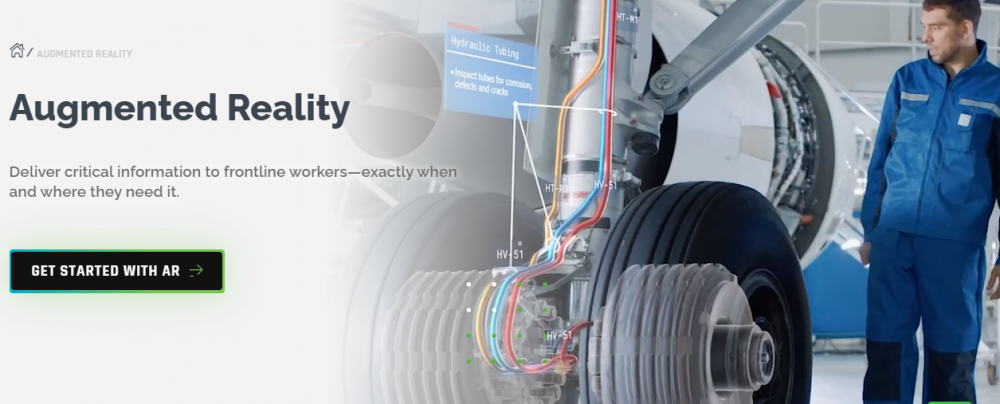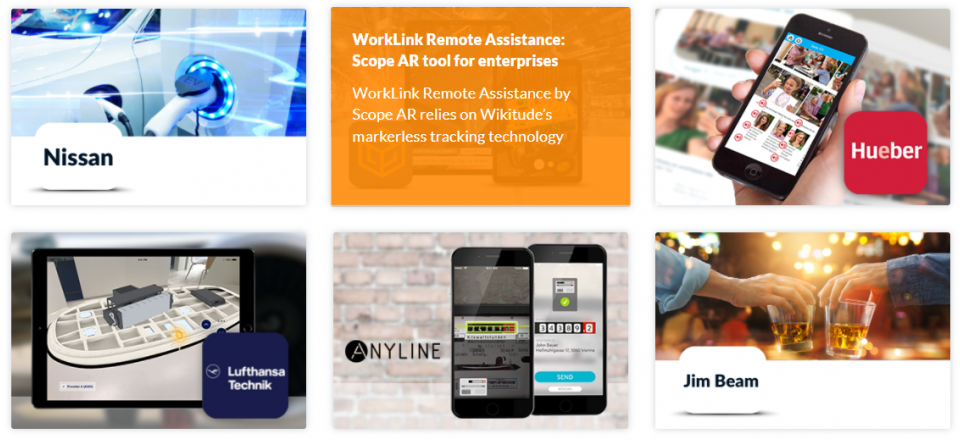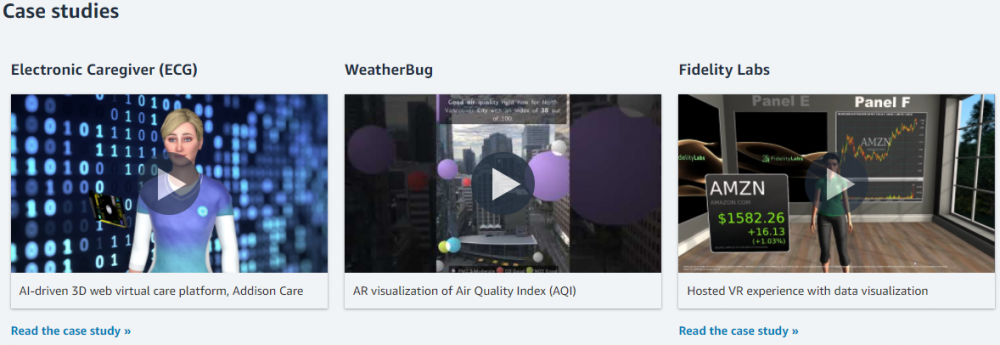Geekflare is supported by our audience. We may earn affiliate commissions from buying links on this site.
Augmented Reality is a technology that is going to change the way we live, communicate, learn and work.
What is Augmented Reality?
Unlike VR (Virtual Reality) which makes you submerge yourself in a virtual environment, AR is all about augmenting the present reality with technology.
Augmented Reality (AR) doesn’t obstruct your vision. It adds to it. Keep reading to know about the latest AR trends and tools.
This is Virtual Reality (VR):

Awkward, Uncomfortable, Blinding, and most of the time, just a form of digital entertainment.
For an ordinary human, this was never meant for anything but amusement. Factor in the cost of a decent VR headset, and you’ll be having a non-essential luxury at hand.
This is Augmented Reality, enriching your vision with digital overlays.
A more straightforward form of AR can be seen in the famous game Pokemon GO. A tiny Pikachu overlay on your surroundings.
Those basic overlays just need your AR-enabled smartphone.
But not just games; brands are also using AR applications for giving a next-level user experience. Take a look at how a furniture brand–IKEA–is using augmented reality:
For more superior projections, you’ll need a dedicated augmented reality headset like the Microsoft HoloLens.
Some call Microsoft HoloLens a Mixed reality (MR) device, which it certainly is. But the term Mixed Reality is coined from mixing the two worlds-real and digital. So, Mixed Reality is nothing but an advanced form of AR–consider it Augmented Reality 2.0.
Currently, augmented reality is an innovation hotbed. Let’s take a look at some of the major AR trends, brand-by-brand.
Recent AR Trends
Google Cloud has teamed up with Fiat Chrysler Automobiles (FCA). The target is to refine the buying process. AR is being deployed to help consumers in making a buying decision. Take a look:

With all that, you can see the Car in 3D through your smartphone on the road. Not only this, it gives a life-like peek inside the cabin.
Catching up in AR, Amazon has opened a Salon! Yes, you read that right. Amazon Salon, in London, is like a regular salon but takes advantage of Augmented Reality. Enter that salon, and you can virtually try different hair colors with AR before finally picking your favorite in real.
Not just this, Amazon has also partnered with BRIO XR. The objective is to make products customer interactive and in 3D. Finally, they are aiming to improve buyer confidence and minimize returns.
Doing AR in style, Facebook has launched its first-generation Smart Glasses with Ray-Ban. These glasses can take photos and videos. They also have an in-built mic and speakers; one can use them for calling as well. You can get them at USD 299 apiece.
Keeping its fans on their toes, Apple is keeping its extended reality (AR, VR, & MR) developments a secret. It is rumored to launch Apple glasses in the near future.
Let’s jump on the following section to review some of the blazing hot AR/MR tools.
Microsoft Mesh
The most recent Mixed Reality development by Microsoft is Mesh.
Microsoft says you can use your smartphone, VR headsets, PCs to participate in Mesh. But it’s the HoloLens that gives you the maximum creativity inside Mesh.
Mesh connects people from different geographical locations. With Mesh-powered devices, it brings them together in a holographic world.
This gives a whole new dimension to remote collaboration.
Google AR
Though not as big as Microsoft, Google has deployed AR in Search, Maps, and Lens.
So you can google search some results (a hedgehog in this case) and visualize that in 3d. Similarly, Google Maps has a live view in limited locations that projects important information on the real world. Currently, Google is constantly driving around the world, adding in the live street view for more locations.
Besides, Google has Lens, which aids in using its search engine directly from the camera. This can also be used in scanning and translating text from images.
Notably, your phone should support ARCore (Android) or ARKit (iOS) to enable AR content. Check out the list of supported devices here.
CoSpaces Edu
CoSpaces uses AR/VR to make teaching enthralling and live. You can implement it to create in 3D and deploy it instantly for the students to educate and entertain.
For instance, check out this virtual exhibition created with CoSpaces tools:
Similarly, educators can create interactive stories and conduct experiments in the virtual world.
They have a free plan for you to try it out risk-free.
Fectar
Similar to CoSpaces, Fectar gives sets of tools to build virtual content easily. It can be used to create presentations, lessons, 3D spaces, etc. But unlike the previous platform, Fectar has much more on the radar.

Fectar has a dedicated section to demonstrate various use cases of its tools. Apart from the industries mentioned in the above image, it covers Real-estate, Marketing, etc.
Vuforia
Vuforia by PTC has its focus on the core industry. They are keen to use AR to the advantage of frontline workers, sales, and manufacturing.

They have various case studies, including some of the big names like Volvo, Toyota which used Vuforia’s AR expertise to their benefit.
Wikitude
Wikitude offers Augmented Reality as their prime and only product. They specialize in AR application development. They have an endless library of applications to show their worth in the realm of augmented reality.

Wikitude has both–one-time and subscription-based plans to cover everyone. Additionally, they allow a 45-day free trial to get a taste of their AR capabilities.
Unity AR
Unity Technologies have MARS (Mixed and Augmented Reality Studio) to help developers, creators, and storytellers. You can use it to build interactive and intelligent AR apps.
Unity ensures that applications developed with MARS will be responsive to physical space and context-aware.

They also have a development platform, AR foundation. You can use it to develop AR apps for multiple platforms (Android, iOS, Wearables, etc.) in one go.
Amazon Sumerian
Sumerian is an Amazon Web Services (AWS) tool to create web-browser-based AR and VR applications.

Sumerian has ready-to-use templates for you. You can use them to create basic scenes and actions using a drag-and-drop user interface. One can utilize the library of scripting APIs for more complex interactions.
Apps built with Sumerian can be delivered to iOS and Android without needing a native app.
For using Sumerian, you need a subscription to AWS, and luckily there is a free tier. The free plan works for 12 months. However, with the trial, you can only publish content limited to 50MB storage, which AWS says is equivalent to 100 views per month.
Its paid plans are charged based on the cloud storage you use and views received during production & editing.
ZapWorks by Zappar
Similar to Wikitude, ZapWorks has an extensive portfolio showcasing its prowess. Check out this video by Zappar showing some of its use cases:
There are plenty of tools for you to create, learn and train in AR.
For creating, they have ZapWorks Studio, ZapWorks Designer, and some universal AR SDKs for developing with various environments.
ZapWorks Studio is a fully-fledged custom AR development tool. In contrast, ZapWorks Designer is a drag-and-drop tool for swiftly creating AR applications.
ZapWorks has a hobbyist plan which is free to create without any commercial use.
Final Words 👨🏫
Extended reality (especially AR) has vital applications for every industry. They already boast countless use-cases and success stories. And it’s only going to expand in quality and reach.
You should try some of the aforementioned platforms, as most are risk-free and come with no commitments. And quite likely, you will add to the testimonials.
If you are looking to learn how to build AR apps then check out this brilliant online course.



